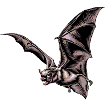Museum, University of Nebraska State

University of Nebraska State Museum: Mammalogy Papers
Document Type
Article
Date of this Version
May 1996
Abstract
Ontario and Quebec were totally covered with ice during the last glaciation. Deglaciation was followed by gradual post-glacial repopulation of these two provinces (and others) by mammals from source areas in the United States. Thus most range expansions were from south to north east of the Great Lakes.
The mammalian fauna of the Mixedwood Plains Ecozone has been steadily changing since deglaciation about 10 000 years ago. During this period a succession of species assemblages has moved through this ecozone as the climate warmed. Several of the larger mammal species known from this area became extinct during this period of change. These included giant beavers, woolly mammoths, mastodons and species of deer and bison (Harington, 1989). Throughout this period there have been steady, gradual changes in the biodiversity of the Mixedwood Plains Ecozone, but the most rapid changes have occurred over the last 300 years.
The best sources of information on the ranges of the mammals of the Ontario and Quebec parts of this ecozone are Peterson (1966) for both parts; Dobbyn (1994) and Peterson (1957) for Ontario; and Prescott and Richard (1982) for Quebec. Currently in the Mixedwood Plains Ecozone there are about 59 species of mammals in 44 genera and 16 families. This does not include four species recorded in this ecozone, but not established as part of its mammal fauna. An Evening Bat (Nycticeius humeralis) accidently occurred in the Lake Erie Lowland Ecoregion once. Black Rats (Rattus rattus), Coypus (Myocaster coypus), and Domestic Ferrets (Mustela putorius) have all been introduced but have not persisted. Although the species richness of mammals has increased since European settlement, biodiversity has decreased in the Mixedwood Plains Ecozone through the reduction in population size of many ecologically important species and the complete disappearance of others. Wolverines, Cougars and Wapiti have all been extirpated from this ecozone. Many species of mammals have been extirpated from much of their former ranges in this ecozone because of destruction of forest habitat, over-harvesting of pelts by fur trappers, over-hunting, and persecution of predators. Southwestern Ontario is an area of special concern because of the permanent conversion of most forests to agricultural land; this has resulted in a dramatic decrease in mammalian biodiversity. The loss of some native species has been coupled with increases in several new species through range expansion or direct introduction from other ecozones. The new species are typically generalists that have adapted to living in disturbed habitats.
Our knowledge of the status of mammal populations in the Mixedwood Plains Ecozone is nowhere near complete. The status and complete distribution are known for only a few species monitored today because of their economic importance. The status of a few other species has been examined by the Committee on the Status of Endangered Wildlife in Canada (COSEWIC); its status designations will be mentioned later in the species accounts. Monitoring programs should be established to determine the status of ecologically important species for proper biodiversity assessments of this ecozone. Many small mammals such as shrews, moles, bats, squirrels, mice, and voles could easily be monitored with existing techniques. Larger mammals would be more difficult to monitor but there are effective methods available. Large mammalian predator populations should be monitored as indicators of ecosystem health. Historically in the Mixedwood Plains Ecozone predator populations have declined most dramatically because of human disturbances.


Comments
From Assessment of Species Diversity in the Mixedwood Plains Ecozone, edited by I. M. Smith. Ecological Monitoring Coordination Office, Environment Canada, 1996. Used by permission.